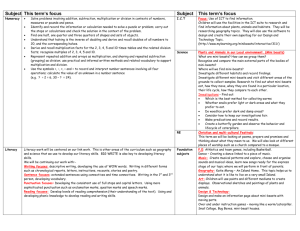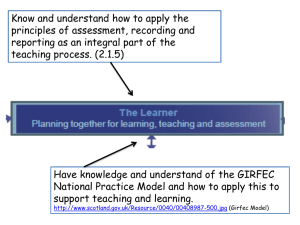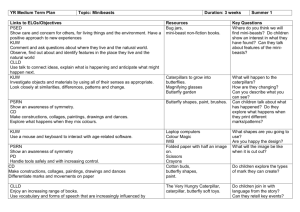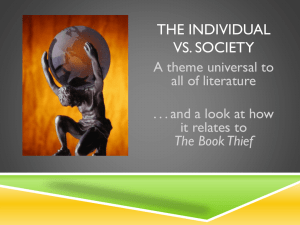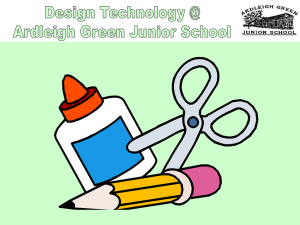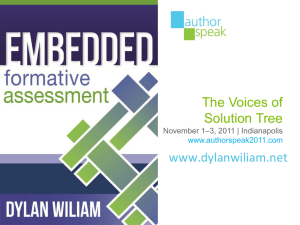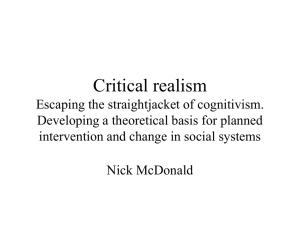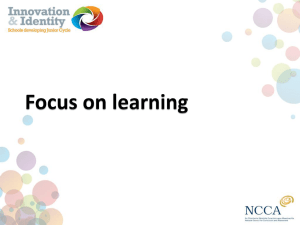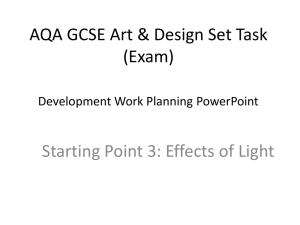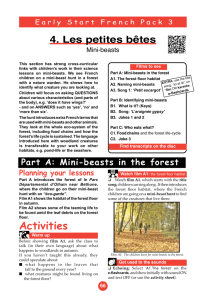Living Things
advertisement
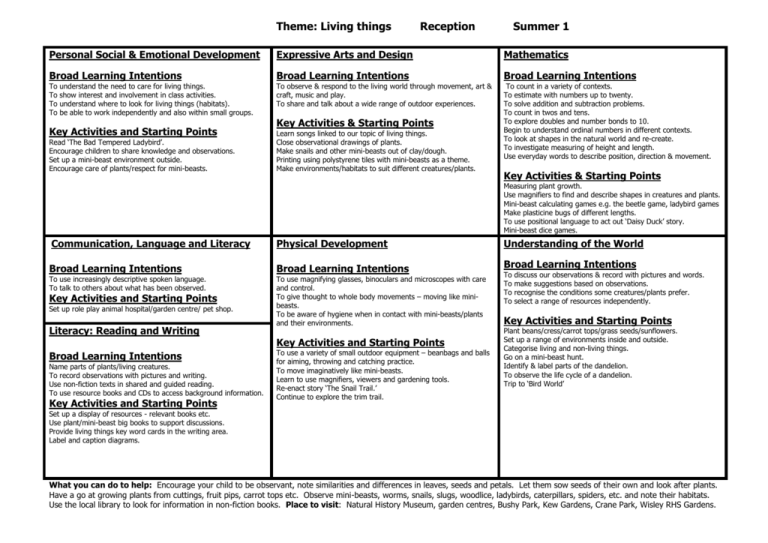
Theme: Living things Reception Summer 1 Personal Social & Emotional Development Expressive Arts and Design Mathematics Broad Learning Intentions Broad Learning Intentions Broad Learning Intentions To To To To understand the need to care for living things. show interest and involvement in class activities. understand where to look for living things (habitats). be able to work independently and also within small groups. Key Activities and Starting Points Read ‘The Bad Tempered Ladybird’. Encourage children to share knowledge and observations. Set up a mini-beast environment outside. Encourage care of plants/respect for mini-beasts. To observe & respond to the living world through movement, art & craft, music and play. To share and talk about a wide range of outdoor experiences. Key Activities & Starting Points Learn songs linked to our topic of living things. Close observational drawings of plants. Make snails and other mini-beasts out of clay/dough. Printing using polystyrene tiles with mini-beasts as a theme. Make environments/habitats to suit different creatures/plants. To count in a variety of contexts. To estimate with numbers up to twenty. To solve addition and subtraction problems. To count in twos and tens. To explore doubles and number bonds to 10. Begin to understand ordinal numbers in different contexts. To look at shapes in the natural world and re-create. To investigate measuring of height and length. Use everyday words to describe position, direction & movement. Key Activities & Starting Points Measuring plant growth. Use magnifiers to find and describe shapes in creatures and plants. Mini-beast calculating games e.g. the beetle game, ladybird games Make plasticine bugs of different lengths. To use positional language to act out ‘Daisy Duck’ story. Mini-beast dice games. Communication, Language and Literacy Physical Development Understanding of the World Broad Learning Intentions Broad Learning Intentions Broad Learning Intentions To use increasingly descriptive spoken language. To talk to others about what has been observed. Key Activities and Starting Points Set up role play animal hospital/garden centre/ pet shop. Literacy: Reading and Writing Broad Learning Intentions Name parts of plants/living creatures. To record observations with pictures and writing. Use non-fiction texts in shared and guided reading. To use resource books and CDs to access background information. Key Activities and Starting Points To use magnifying glasses, binoculars and microscopes with care and control. To give thought to whole body movements – moving like minibeasts. To be aware of hygiene when in contact with mini-beasts/plants and their environments. Key Activities and Starting Points To use a variety of small outdoor equipment – beanbags and balls for aiming, throwing and catching practice. To move imaginatively like mini-beasts. Learn to use magnifiers, viewers and gardening tools. Re-enact story ‘The Snail Trail.’ Continue to explore the trim trail. To To To To discuss our observations & record with pictures and words. make suggestions based on observations. recognise the conditions some creatures/plants prefer. select a range of resources independently. Key Activities and Starting Points Plant beans/cress/carrot tops/grass seeds/sunflowers. Set up a range of environments inside and outside. Categorise living and non-living things. Go on a mini-beast hunt. Identify & label parts of the dandelion. To observe the life cycle of a dandelion. Trip to ‘Bird World’ Set up a display of resources - relevant books etc. Use plant/mini-beast big books to support discussions. Provide living things key word cards in the writing area. Label and caption diagrams. What you can do to help: Encourage your child to be observant, note similarities and differences in leaves, seeds and petals. Let them sow seeds of their own and look after plants. Have a go at growing plants from cuttings, fruit pips, carrot tops etc. Observe mini-beasts, worms, snails, slugs, woodlice, ladybirds, caterpillars, spiders, etc. and note their habitats. Use the local library to look for information in non-fiction books. Place to visit: Natural History Museum, garden centres, Bushy Park, Kew Gardens, Crane Park, Wisley RHS Gardens.
